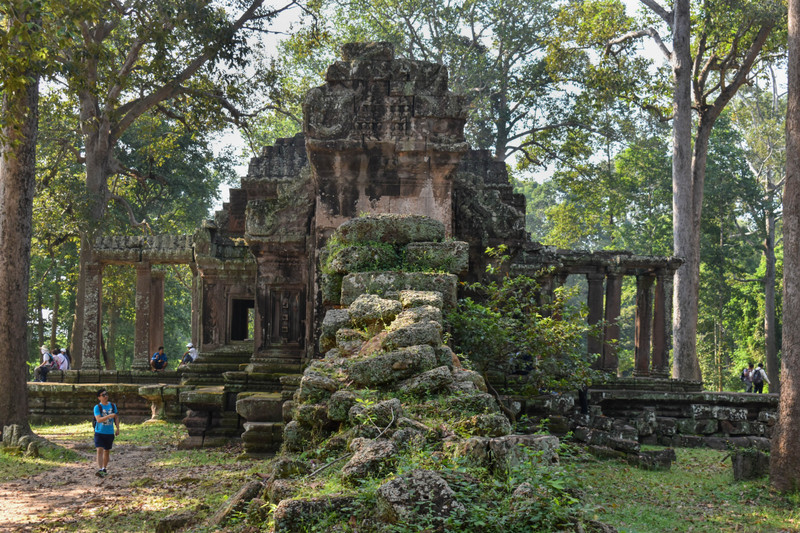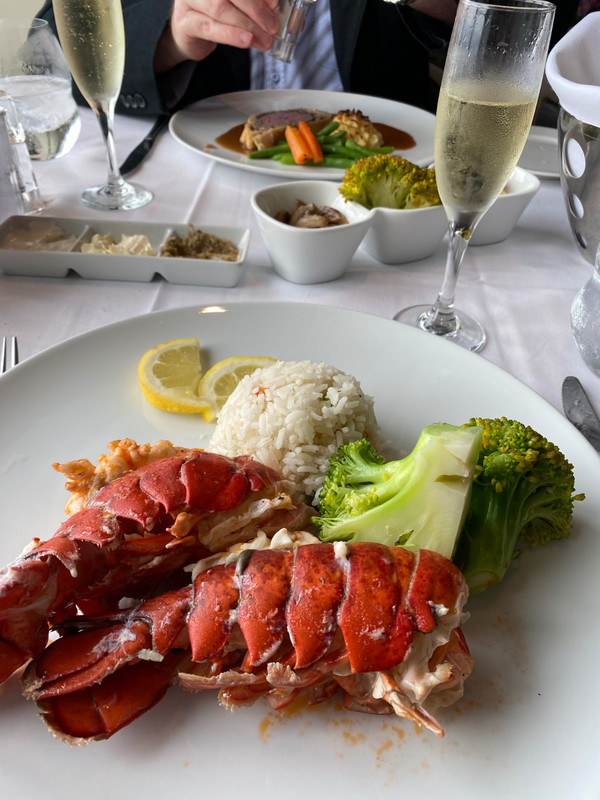Today was going to be another full day of sight seeing and probably the reason we all came to Cambodia as we would be visiting the world famous ruins of Cambodia. We set off for the official ticket center where we picked up our local guide Johnny for the next 2 days and obtain our 2 day pass to the Angkor Archaeological Park. From here, we made our way into the hot Cambodian jungle. Spread out over 400 square kilometers, the Angkor Archaeological Park contains approximately 1,000 temples of various sizes and states of decay, the most famous among them being Angkor Wat. Built in the 1200s, Angkor Wat is known as the largest religious monument in the world. We began our tour of the Angkor Wat temple at the eastern entrance, and our group began walking to the Gate of Taku, one of the original entrances leading to the Angkor Wat temple. We just had a brief look around and I was surprised that people were allowed to roam freely amongst the ruins. In most places, a site like this would be roped off and only seen from a distance. We continued our way to the temple where the jungles
heat and humidity were already stifling and I noticed that my legs were being attacked by biting insects despite all the insect repellent that I had applied. Our first glimpse of the towers of Angkor Wat came into view through the jungles trees and I quickly forgot about the biting bugs and the heat. We arrived at the outer walls of Angkor Wat and stood there in awe realizing we are seeing one of the worlds great monuments. Thankfully we were in a not so crowded area of the temple, a far cry from the throngs of tourists we would encounter inside. After taking our obligatory photos, we continued on with our walking tour. We made our way into the inner temple and we started to encounter more tourists. It was here that Sreymon made another about the throngs of Chinese tourists. were not unfounded in my opinion. There were areas where signs clearly indicated to be quiet and many of the Chinese tourists were talking so loudly that it was bordering on yelling. Even more disrespectful was the fact that I saw many Chinese tourists spit. Definitely not appropriate for inside a religious temple. Bad
behavior isnt just isolated to Chinese tourists but since there were so many of them here at Angkor Wat, they just stood out more to me. We eventually made it into the inner area of the temple and here is where most of the tourists were concentrated. We did our best to admire and the intricate carvings within the temple walls all while trying to dodge other tourists. There were 2 Buddhist monks here offering prayers for a small donation and I was hoping for an opportunity to take part but for now Sreymon brought us to a less crowded area where we were able to sit while she and Johnny explained some of the history of what we were seeing here at Angkor Wat. It was nice to be able to sit for a while and rest as the heat was draining my energy. Once our history lesson was over, we were encouraged to line up now to climb the stairs to the upper level of the temple before it got even more crowded and more warm. The sun, high heat, and humidity belted down on those of us in line but thankfully the queue moved relatively quickly and
we eventually made our way up the steep staircase to the upper levels of the temple. Back in its glory days, this area high above the surrounding jungle was reserved for societal elites. Today, it is jam packed with tourists enjoying the views over the jungle as well as the nice breeze flowing through this area. Shea and I wandered around checking out the amazing intricate apsara carvings within the walls of the temple. Apsaras are female spirits of the clouds and water in both Hindu and Buddhist culture. The apsara carvings were so well preserved despite hundreds of years and all the tourists who are free to touch anything and everything inside the temple.









